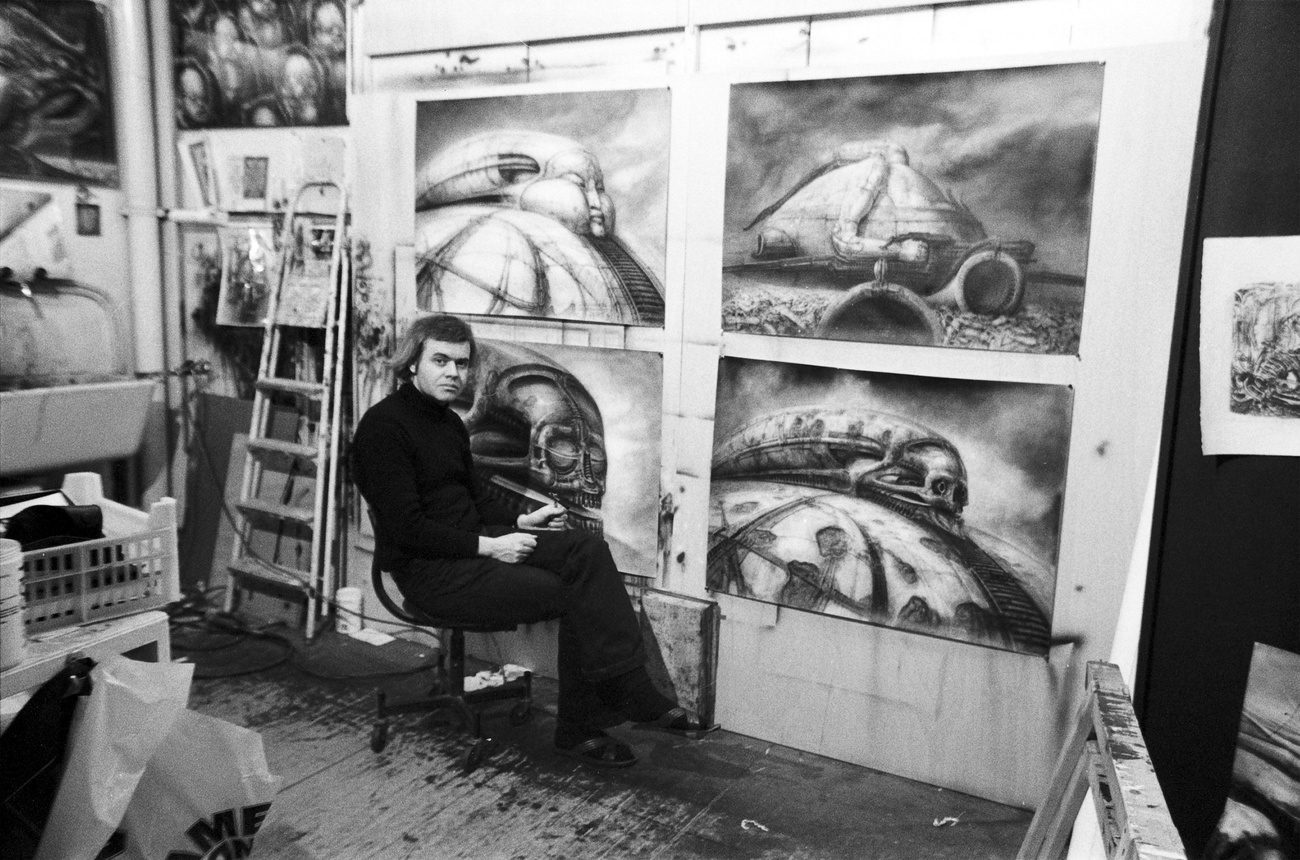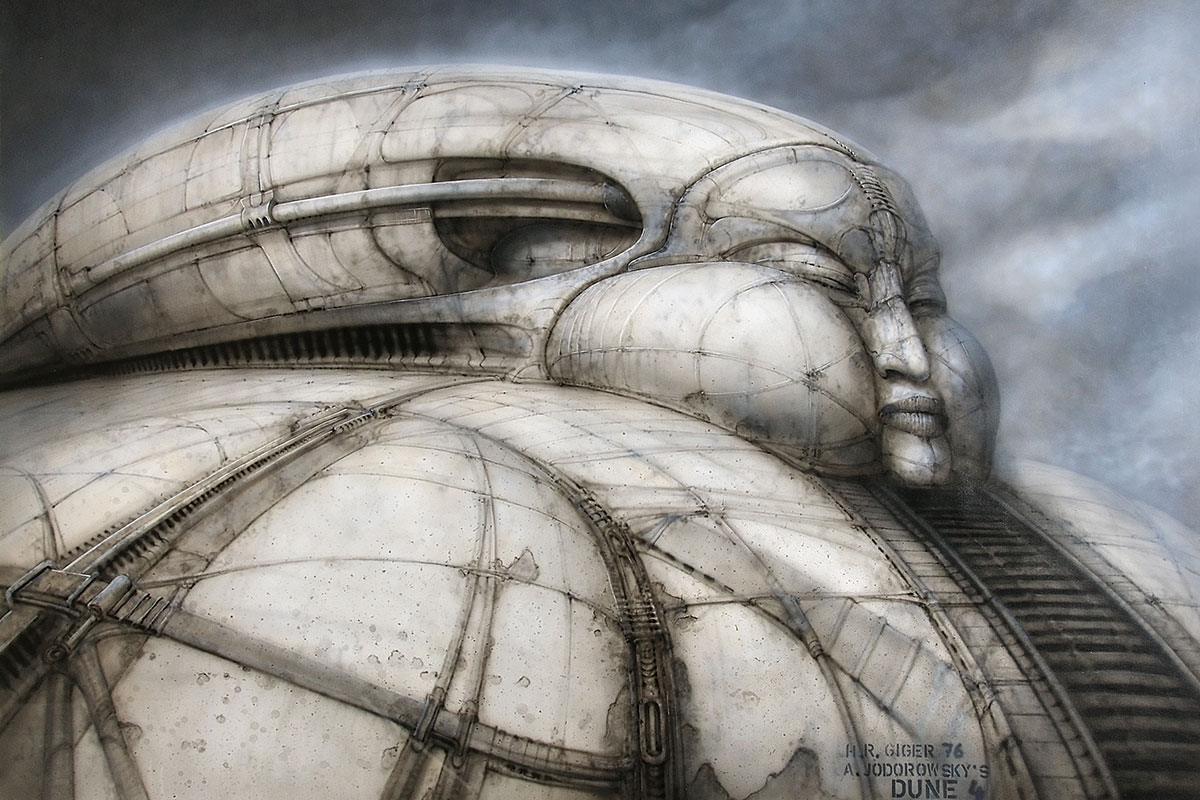
HR Giger and the buried ‘Dune’ project

Even though Alejandro Jodorowsky’s cinematic version of Dune was never made, it still attracts global attention. Last month his storyboard sold for £2.2 million (CHF2.75 million). Inimitable Swiss artist HR Giger, of Alien fame, was among the “spiritual warriors” he wanted to gather for his project.
In January a group of anonymous investors bought the illustrated concept book for the film version of Dune by Chilean-born director Alejandro Jodorowsky – a film that was never actually made. The group mistakenly believed that the purchase of the book included the copyright. They wanted to sell sections of the book as NFTs (non-fungible tokens) or sell the ideas to a streaming service – and then burn the book.
Jodorowsky’s unfinished film of Frank Herbert’s 1965 sci-fi novel is cinema legend. The director made a quirky cult western, El Topo (The Mole), which drew a loyal following at midnight screenings in the 1970s, much like The Rocky Horror Picture Show or Pink Flamingos.
One famous fan was John Lennon, who helped finance Jodorowsky’s film The Holy Mountain, an orgy of blasphemous images in which, among other things, a lizard dressed as an Aztec king is blown to pieces and birds flutter out of bullet wounds.
In the mid-1970s Jodorowsky, now 93, decided to make the first cinematic version of Dune. A documentary film, Jodorowsky’s Dune, describes how he travelled around the world trying to find “spiritual warriors” and “geniuses” to work on the film.
He approached British band Pink Floyd and courted singer Mick Jagger and Spanish artist Salvador Dalí, whom he was prepared to pay $100,000 (CHF92,000) a minute – and for whom he was willing to procure a burning giraffe.
In Paris Dalí had shown drawings by Giger (1940-2014) to Jodorowsky. Jodorowsky was enthusiastic: he told the Swiss artist that he absolutely had to have his “sick art” to illustrate the planet of the Harkonnen, the villains of the piece. Giger was to be a kind of architect of evil; his drawings were to become models for the film’s backdrops. Jodorowsky gave Giger completely free rein. The artist created a few airbrush drawings that became part of the storybook.
Of his drawings of Harkonnen Castle, Giger said: “Harkonnen’s head is a gigantic fortress that protects the castle from attacks by land and air. The front part of the head can be mechanically lowered and reveals a fortified skull that spouts death and destruction.”
But the film was never made – Hollywood couldn’t handle a megalomaniac like Jodorowsky, who already warned in presentations that his film might turn out to be 12 hours long. Fans would have to wait until 1984 for David Lynch’s movie of the sci-fi classic.
The storyboard has influenced countless films. One of the achievements of this flop was to bring HR Giger into film – he would go on to secure international fame with Alien together with Dan O’Bannon, who was also involved in Jodorowsky’s Dune project.
(Translated from German by Catherine Hickley)

More
H.R. Giger and his work

In compliance with the JTI standards
More: SWI swissinfo.ch certified by the Journalism Trust Initiative









































Join the conversation!